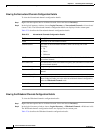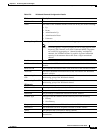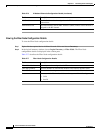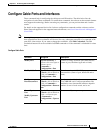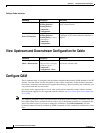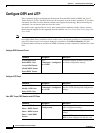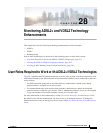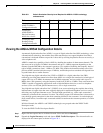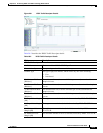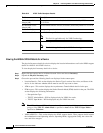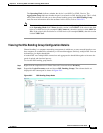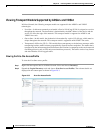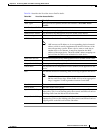
28-2
Cisco Prime Network 4.0 User Guide
OL-29343-01
Chapter 28 Monitoring ADSL2+ and VDSL2 Technology Enhancements
User Roles Required to Work with ADSL2+/VDSL2 Technologies
Viewing the ADSL2+/VDSL2 Configuration Details
Asymmetric digital subscriber line (ADSL) is a type of digital subscriber line (DSL) technology, a data
communications technology that enables faster data transmission over copper telephone lines than a
conventional voiceband modem can provide. It does this by utilizing frequencies that are not used by a
voice telephone call.
ADSL2+ extends the capability of basic ADSL by doubling the number of downstream channels. The
data rates can be as high as 24 Mbit/s downstream and up to 1.4 Mbit/s upstream depending on the
distance from the DSLAM to the customer's premises. It is capable of doubling the frequency band of
typical ADSL connections from 1.1 MHz to 2.2 MHz. This doubles the downstream data rates of the
previous ADSL2 standard (which was up to 12 Mbit/s), and like the previous standards will degrade from
its peak bitrate after a certain distance.
Very-high-bit-rate digital subscriber line (VDSL or VHDSL) is a digital subscriber line (DSL)
technology providing data transmission faster than ADSL over a single flat untwisted or twisted pair of
copper wires (up to 52 Mbit/s downstream and 16 Mbit/s upstream), and on coaxial cable (up to 85
Mbit/s down- and upstream); using the frequency band from 25 kHz to 12 MHz. These rates mean that
VDSL is capable of supporting applications such as high-definition television, as well as telephone
services (voice over IP) and general Internet access, over a single connection.
Very-high-bit-rate digital subscriber line 2 (VDSL2) is an access technology that exploits the existing
infrastructure of copper wires that were originally deployed for traditional telephone service as a way of
delivering very high speed internet access. The main high-speed link (e.g. a fibre optic connection)
terminates at a hub near the customers' location. The existing copper wire infrastructure is then used to
carry the high speed connection for the short remaining distance to the customers. It can be deployed
from central offices, from fiber-optic connected cabinets located near the customer premises, or within
buildings.
In Prime Network, the ADSL2+ and VDSL2 technologies are grouped under the XDSL Traffic
Descriptors node.
To view the XDSL Traffic Descriptors Details:
Step 1 Right-click the required device in Prime Network Vision and choose Inventory.
Step 2 Expand the Logical Inventory node and choose XDSL Traffic Descriptors. The relevant details are
displayed in the content pane as shown in Figure 28-1.
Table 28-1 Default Permission/Security Level Required for ADSL2+/VDSL2 technology
enhancements
Task Viewer Operator OperatorPlus Configurator Administrator
Viewing the
ADSL2+/VDSL2
Configuration details
XXXXX
Viewing the
ADSL/ADSL2+
Physical Inventory
details for a device
XXXXX
Viewing the DSL
Bonding Group
Configuration details
XXXXX



